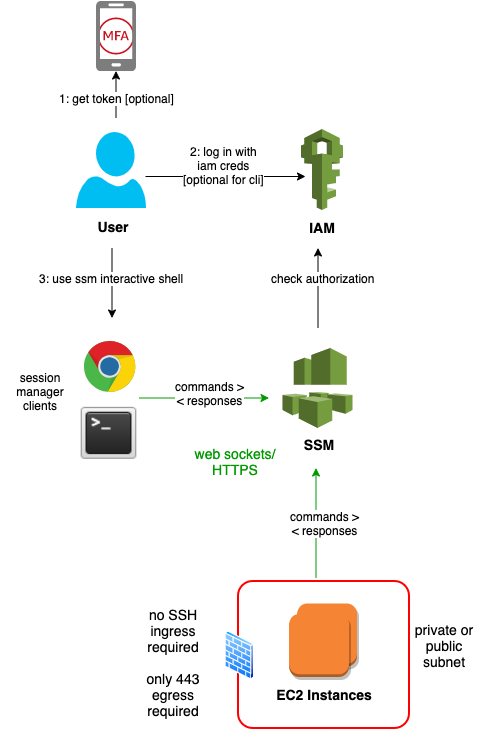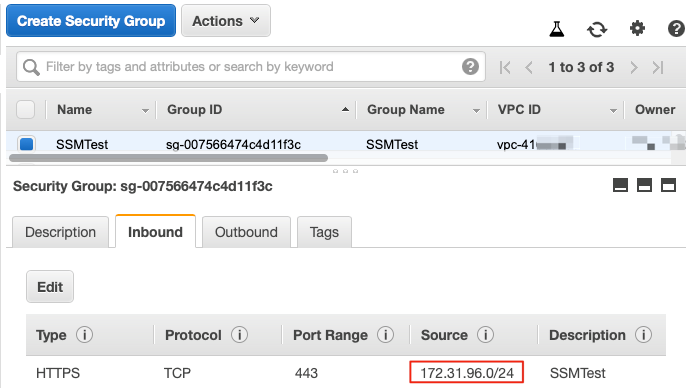

- AWS SESSION MANAGER INSTALL
- AWS SESSION MANAGER WINDOWS
We are all set to connect with EC2 instance using SSM via CLI. Make sure to configure AWS Access Key Id, AWS Secret access key, AWS session token in the terminal. Export the AWS credentials from SSO and configure it to the terminal. Also, Don't forget to give 400 Permission to your key. Also we will require Instance ID, for connecting with EC2 instances. Key and Username can be taken from the AWS Admin. We will require SSH key " user-key.pem" and Username " Dummy-User" for connecting to the EC2 instance. Wait, Before connecting to CLI, Do you have your SSH-Key and UserName?. There are 2 ways to connect with EC2 instances. below mentioned configuration needs to be stored in the ". In order to connect with the EC2 instance via SSM, we need to configure our local system. This role now can be attached to the users who require access to instances using SSM. below mention role will perform the tag-based filtering allowing only those instance that contains the tag "TAGName": "Instance-tag". We need to create roles, and using tags we are going to permit users to connect with specific instances only. In order to allow users to connect with SSM via SSO,. Now, "SSM Role" is successfully attached to the EC2 instance. Select the IAM role to attach to your instance, and choose Save.Ĥ. Select the instance, choose Actions, Security, and Modify IAM role. In the navigation pane, choose Instances. Now "SSM Role" can be attached to the EC2 instances on which we want to implement the SSM.īelow are the steps to attach the IAM role to an EC2 instance. If you wish to store logs in the S3 bucket then create one more custom policy and attach it to the "SSM Role".ģ. Since we want to display our logs on cloud watch, so create one custom policy and attach it to the "SSM Role". Create a Role "SSM-Role" and attach the following AWS managed policies to it.Īrn:aws:iam::aws:policy/service-role/AmazonEC2RoleforSSMĪrn:aws:iam::aws:policy/AmazonSSMManagedInstanceCore. Now, once the SSM is installed and running on the system, we need to create IAM Role which can be attached to the EC2 instance. Ubuntu Server 16.04 64-bit instances (deb package installation Using the below command we can check if SSM is installed in the instance or not. In most cases, the SSM agent is preinstalled on AMIs provided by AWS. AWS SESSION MANAGER INSTALL
For Implementing SSM on any EC2 instance, we need to install the SSM agent on the EC2 instance. SSM Agent needs to be installed on each EC2 instance. All actions performed via SSM are logged to the cloud trail. An Agent running on the EC2 instance connects to the SSM endpoint and executes the command inside the EC2 instance. After Successful authentication, the user gets access to the instance via the AWS console. Users are authenticated through the IAM role. No need to open the inbound port in the security group. Centralised access Control using IAM policies. 
We can provide customised permission for the users logging into the machine.We can control the duration for which a session is active.Extremely simple steps to connect to EC2 via the AWS console.Also provides strong monitoring and logging features.

It helps us to improve Infrastructure security, and data protection.
AWS SESSION MANAGER WINDOWS
It is supported for Windows Server, Linux and macOS managed nodes. It provides secure and auditable edge device and instance management without needing to open inbound ports, maintain bastion hosts, or manage SSH keys. To provide access to a private network from an external network, we need to run a bastion host.ĪWS Systems Manager Session Manager allows us to manage Amazon Elastic Compute Cloud (Amazon EC2) instances through an interactive one-click browser-based shell or through the AWS CLI.We have to open SSH inbound port to allow to connect.If we lose a SSH key or if gets stolen, then we have to go through lots of challenges and processes to recover it. It is very difficult to monitor SSH usage.SSM provides you the Secure instance management without need to open inbound ports, or manage SSH key. Session Manager is a fully managed resource by AWS that allows you to manage, access and troubleshoot Amazon Elastic Compute Cloud (EC2) instances. This blog talks about one security measure that we took by implementing SSM. At Halodoc, we take security very seriously.







 0 kommentar(er)
0 kommentar(er)
